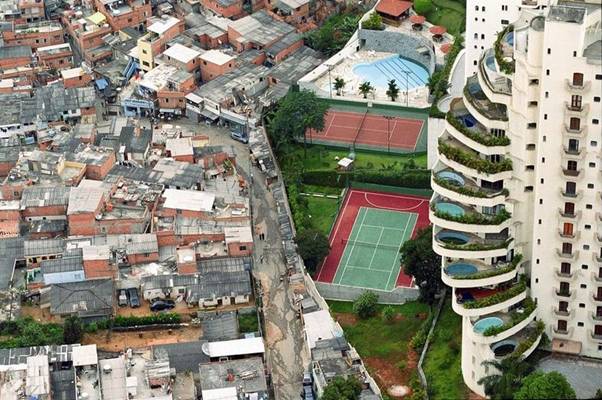Income distribution
 Even
though a country is experiencing considerable economic growth,
standards of living across the population may not rise if the gains
from growth are unevenly distributed.
Even
though a country is experiencing considerable economic growth,
standards of living across the population may not rise if the gains
from growth are unevenly distributed.
Remember the picture on Sao Paulo with the super-rich living in close proximity to a favela (see right)?
Income distribution describes how the national income of a country is distributed between its citizens.
Although there is not an example of a country with a completely equal distribution of income, some countries have considerably greater disparity and variation than others.
There are a number of reasons why a country's income may not be evenly distributed:
- The way in which a country's wealth is distributed. If tangible assets, such as land and buildings and intangible assets, such a human ingenuity, abilities and skills are not evenly distributed, then the income that those resources are capable of generating will not be evenly distributed either. Our understanding of the market place tells us that where something is in short supply relative to demand, its value goes up. This applies equally where there are skill shortages, thus guaranteeing higher incomes for skilled labour
- Long established historical and political reasons. Certain groups in society have managed to gain ownership of productive assets, such as agricultural land. In South Africa prior to the ending of apartheid (where the various racial groups were forced by the white ruling party to live in separate areas of the country), the majority black African population were excluded from much of the best agricultural land.
-
Social factors such as religion, gender, class, race. It is common in most countries for certain groups to have restricted access to the wealth of a country.